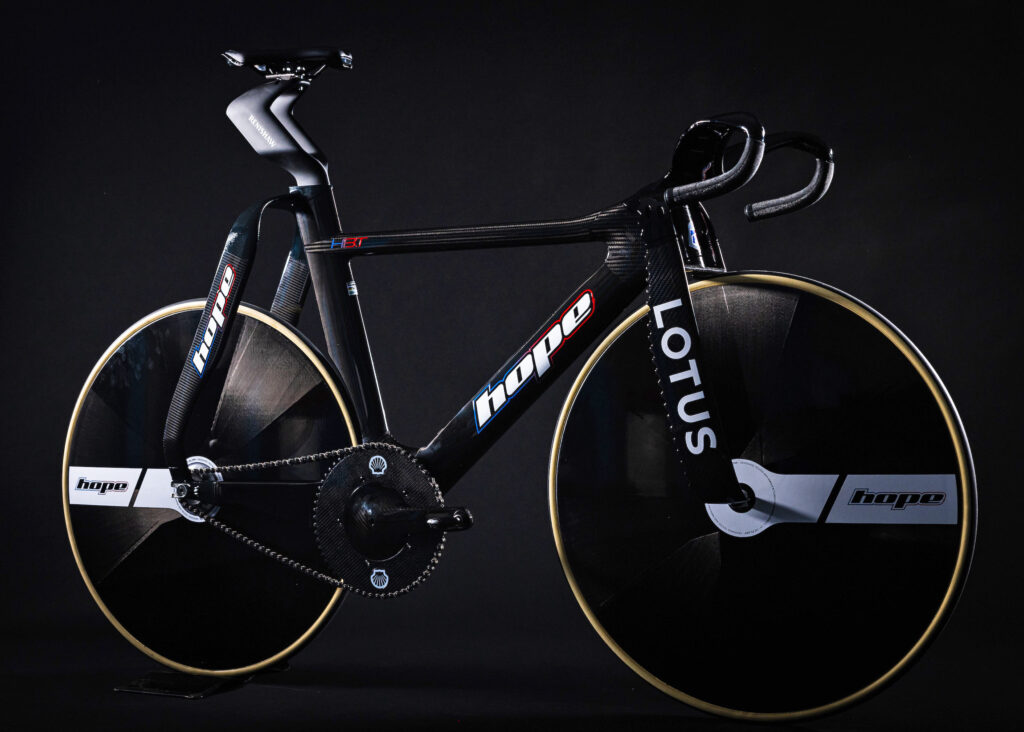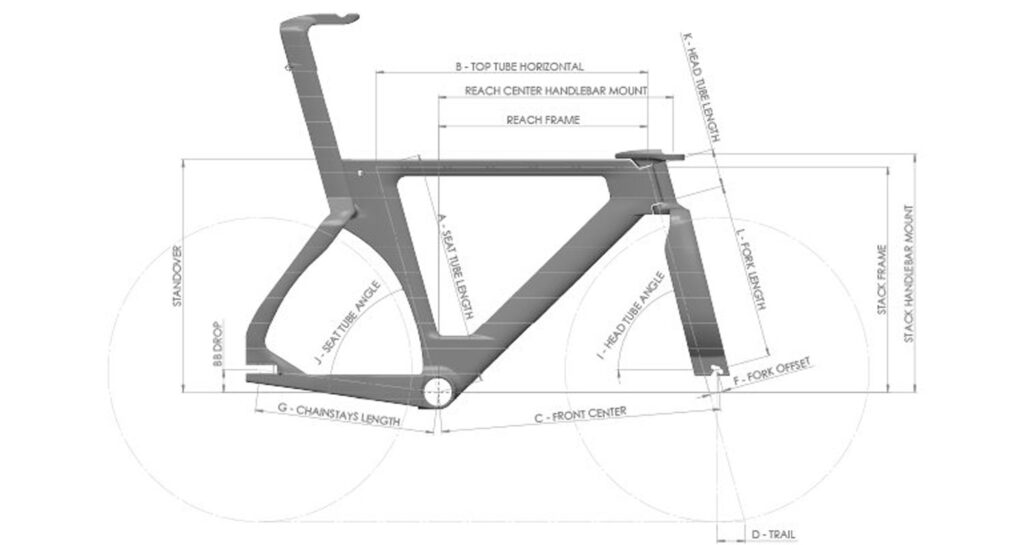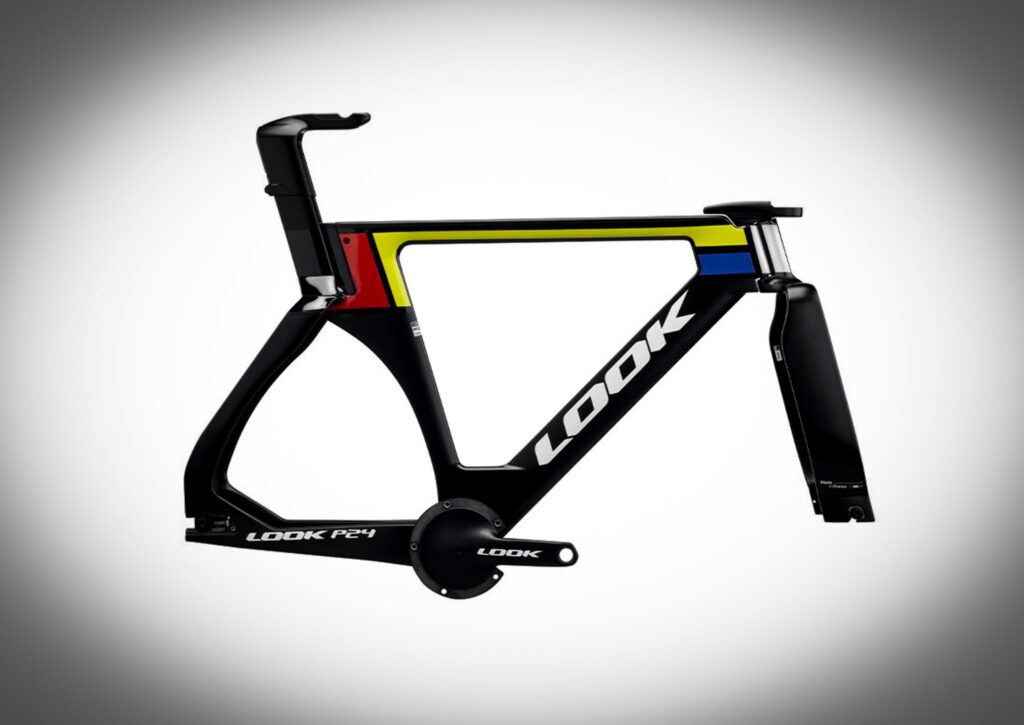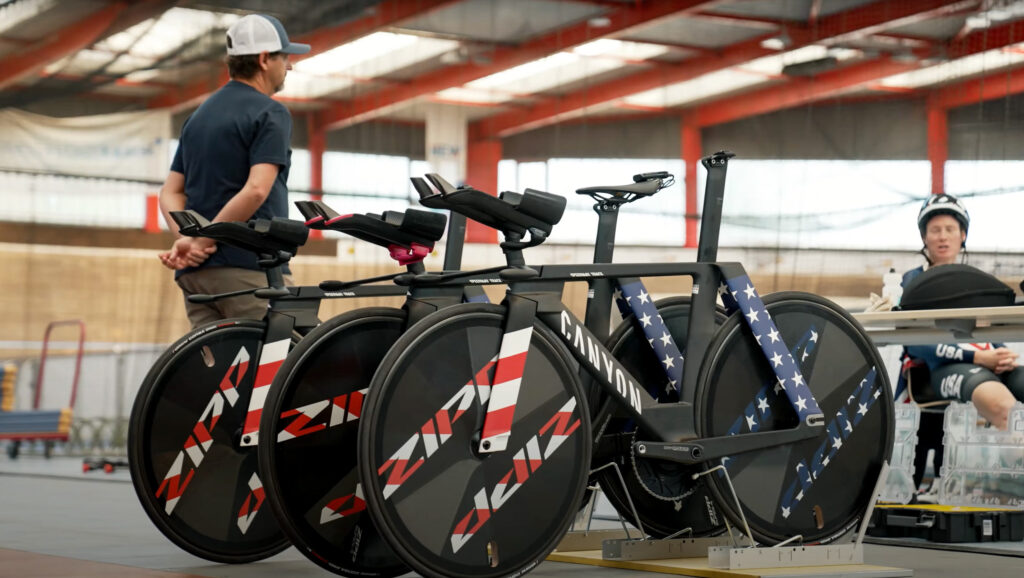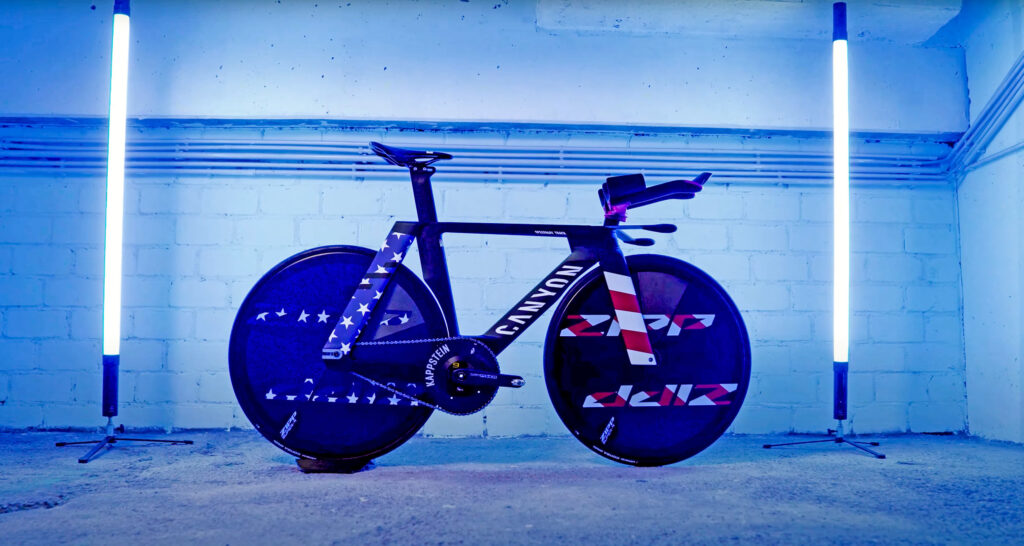With the UCI’s all-in-one world championships now underway, and the Paris Olympics less than a year away, it won’t be long before we start seeing what bike companies (and national federations) have come up with to get a winning edge…
– By Rob Arnold
One of the first hints of some major design changes for bikes that are likely to be used at the Paris Olympics next year came from the collaboration between Lotus and Hope at the end of July.
“Inspired by fighter jets, the fork’s serrated edge creates smoother airflow around the rider,” is one of the bullet points from the press release issued last Friday about the bikes we can expect to see raced by track riders from Team GB in the near future.
The UCI has a long series of regulations pertaining to new equipment used in competition and although the track races at the Paris Games (5-11 August 2024) are a little over a year away, it won’t be long before new designs are unveiled.
The Hope / Lotus bike is one example of what is likely to be a wave of extreme designs but it’s not the only innovation that has come to light of late.
France has a long and successful tradition in track events at the Olympic Games and world championships. The country also has a strong, ongoing partnership with Look Cycles, the equipment supplier for French track riders for many years.
Although few have seen the new P24 in competition, Look has already featured this innovative looking frame on its website, complete with a retail price of USD$11,999.
The blurb below an image of Look’s latest track frame tells us the following:
“The sleek and futuristic lines of the LOOK P24 embody its bold and dynamic character. It epitomizes the essence of speed, purity, and unwavering confidence. It is an extension of the rider’s body, a seamless fusion between man, machine, and the track. Get ready to feel the palpable excitement, pure adrenaline, and insatiable desire for victory.”
There’s not much tech-talk at all, but anyone playing marketing bingo will have a busy time in the coming days, weeks, and months as bike brands emerge from test sessions in the wind-tunnel and on to the velodrome. Look has got the ball rolling and it won’t be long now before we see and hear more about the “seamless fusion between man, machine, and the track”.
Do you feel the “palpable excitement” already? Do you have an “insatiable desire for victory”?
Then strap yourself in for a hell of a ride if you’ve got the patience to scour through patent pages trying to find which companies have come up with what design to shave a few seconds from race times on the track.
There’s nothing new, per se, about different designs being created in the quest for faster bikes but just when you thought things had reached halcyon point, aerodynamic studies and innovative thinking combined with the challenge of circumnavigating equipment regulations imposed by the UCI have conjured creations that seemed fanciful only a few years ago.
The broad fork crown and bizarre rear stays that Hope / Lotus featured on Team GB’s bikes in recent years have become more common, with Look’s P24 frameset taking a few cues from the Brits.
Canyon has also done something similar with the rear stays of track bikes that have been raced by Team USA (although the chainrings are back on the right-hand side of the bike, flipping the innovation by previous bike supplier, Felt, from a few years earlier).
Meanwhile, the Australian Cycling Team seems intent on continuing to experiment with 3D printed after-market handlebars, with some spy shots seen online showing what seems to be new, integrated bar/stem designs.
There also seems to be movement with regards to sponsorships, with Factor-branded track bikes seen hanging beside the existing Argon18 bikes used by the Australian team.
It’s no secret that AusCycling has been courting various companies in the hunt for sponsorship dollars but to date there has been no formal announcement of a change of bike supplier, even if rumours abound about a new association with Factor.
There are registration deadlines for equipment national teams plan to race at the Paris Olympics. Any bikes, clothing, and/or helmets that national teams plan to race with at the Games in 2024 will have to be commercially available by 1 January 2024.
This means prototypes that are now being tested will soon need to be put into production and patent applications formalised.
What’s ironic about the equipment wars being waged by countries with aspirations of success at the Olympic Games (and in other competitions) is that the protocols applied by the UCI were drafted in the hope of making track cycling more accessible for all, not just nations with healthy budgets. That notion is a sound, logical one but in elite sport the quest to gain an advantage over a rival will undoubtedly continue.
– By Rob Arnold
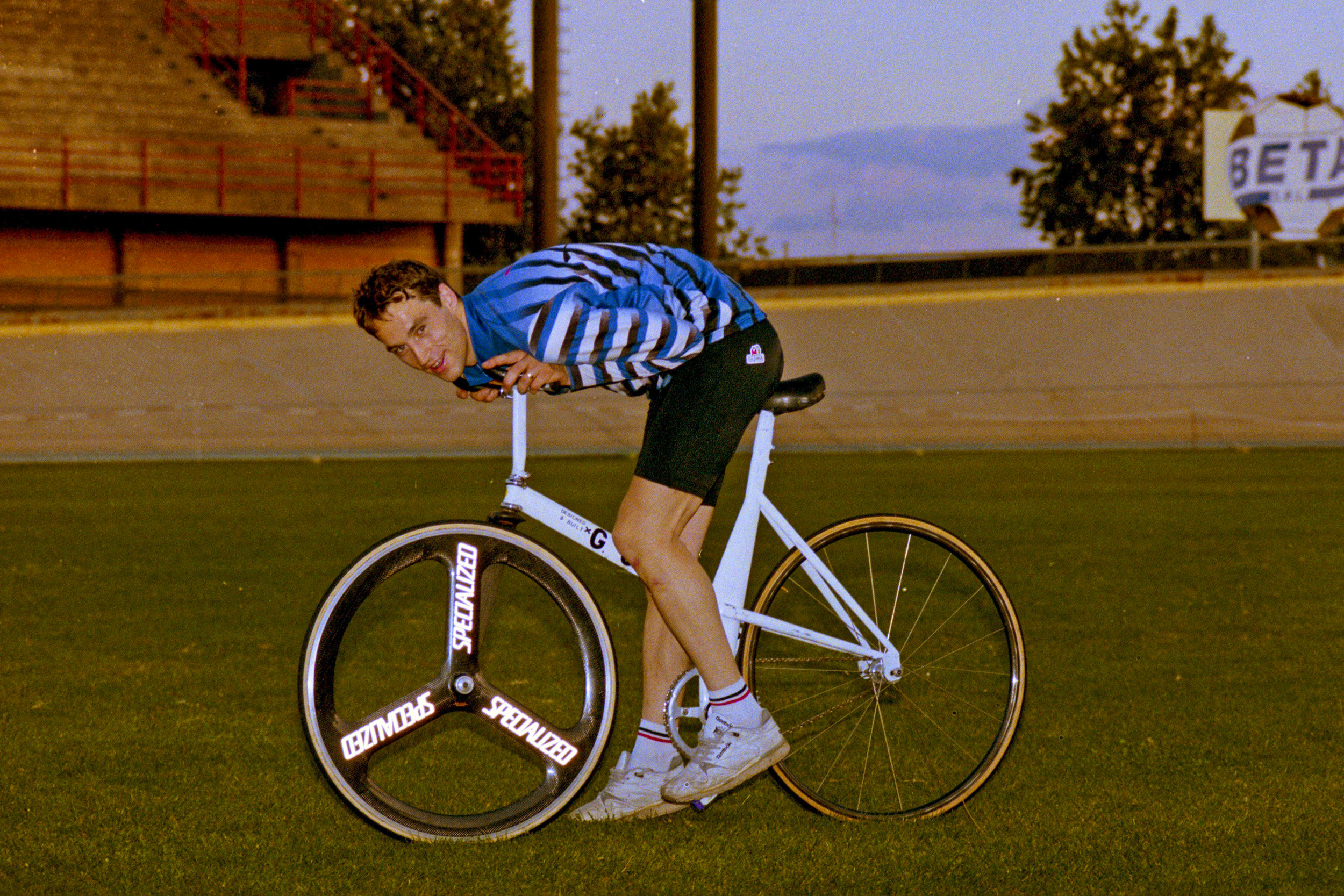
While bike companies are willing to experiment with designs in 2023, it’s well worth acknowledging the work of cycling’s true bike design pioneer – the one and only Graeme Obree. (Photo: Sirotti)
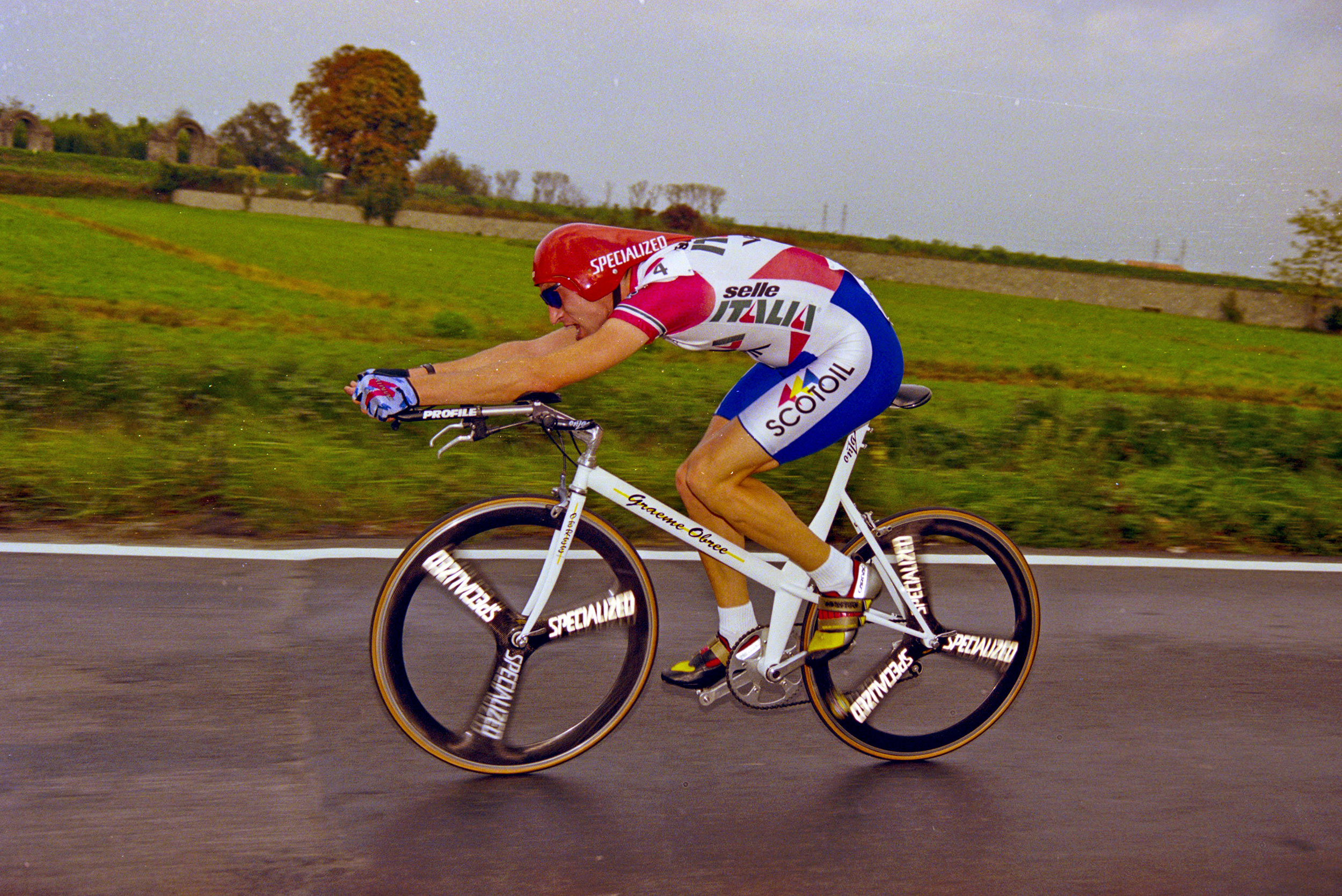
When the UCI worked out a way to ban Obree’s original extreme riding style… he went back to the drawing board and came up with another one – the famous Superman Position. (Photo: Sirotti)


